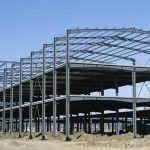Course Overview:
The course on “Stress and Strain Analysis in Engineering Structures” covers the fundamental principles for evaluating and analyzing the stresses and strains that engineering structures undergo under various loads. The course aims to enhance participants’ understanding of how to analyze the response of materials and constructions, enabling them to design safer and more efficient structures.
Course Objectives:
• Understand the theoretical foundations of stress and strain analysis.
• Familiarize participants with methods for calculating stresses and strains resulting from different loads.
• Develop skills in using engineering software for stress analysis.
• Apply concepts to real-world case studies to assess the response of structures.
• Enhance the ability to make design decisions based on stress analysis results.
Training Content:
• Introduction to the principles of stress and strain.
• Types of stresses (axial stress, shear stress, and bending stress).
• Analysis of stresses and strains in different materials (metals, concrete, etc.).
• Analysis methods: manual calculations and software-based analysis.
• Practical applications on common structures (columns, beams, slabs).
• Case studies of stress analysis in various conditions.
• Evaluating and interpreting results in the context of engineering design.
• Safety procedures and reverse engineering in structural analysis.
Target Audience:
This course is aimed at civil and structural engineers, engineering students, researchers in materials and structures, and professionals seeking to enhance their skills in stress and strain analysis. It is also beneficial for planners and designers who need a deep understanding of how loads affect the safety of engineering structures.






